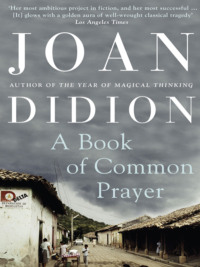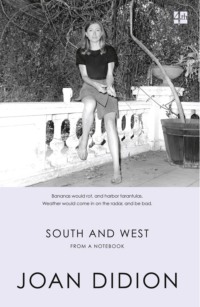
Полная версия
Where I Was From
This annual reappearance of a marsh that did not drain to the sea until late spring or summer was referred to locally not as flooding but as “the high water,” a seasonal fact of life, no more than an inconvenient but minor cost of the rich bottom land it created, and houses were routinely built with raised floors to accommodate it. Many Sacramento houses during my childhood had on their walls one or another lithograph showing the familiar downtown grid with streets of water, through which citizens could be seen going about their business by raft or rowboat. Some of these lithographs pictured the high water of 1850, after which a three-foot earthen levee between the river and the settlement was built. Others showed the high water of 1852, during which that first levee was washed out. Still others showed the high water of 1853 or 1860 or 1861 or 1862, nothing much changing except the increasing number of structures visible on the grid. “If you will take, on a map of California, Stockton, Sacramento, and San Francisco as guiding points, you will see that a large part of the land lying between these cities is marked ‘swamp and overflowed,’” Charles Nordhoff, the grandfather of the co-author of Mutiny on the Bounty, wrote in his 1874 Northern California, Oregon and the Sandwich Islands:
Until within five or six years these lands attracted but little attention. It was known that they were extremely fertile, but it was thought that the cost and uncertainty of reclaiming them were too great to warrant the enterprise. Of late, however, they have been rapidly bought up by capitalists, and their sagacity has been justified by the results on those tracts which have been reclaimed. These Tule lands … are simply deposits of muck, a mixture of the wash or sediment brought down by the Sacramento and San Joaquin rivers with the decayed vegetable matter resulting from an immense growth of various grasses, and of the reed called the “tule,” which often grows ten feet high in a season, and decays every year.… The swamp and overflowed lands were given by Congress to the State, and the State has, in its turn, virtually given them to private persons. It has sold them for one dollar per acre, of which twenty percent was paid down, or twenty cents per acre; and this money less some small charges for recording the transfer and for inspecting the reclamation, is returned by the State to the purchaser if he, within three years after the purchase, reclaims his land. That is to say, the State gives away the land on condition that it shall be reclaimed and brought into cultivation.
The creation of the entirely artificial environment that is now the Sacramento Valley was not achieved at one stroke, nor is it complete to this day. Bulletins on when and where the rivers would crest, on the conditions of levees and the addresses of evacuation centers, remained into my adult life the spring commonplaces of Sacramento life, as did rumors that one or another levee had been (or was being, or would be) covertly dynamited by one or another agency looking to save one or another downstream community. During years when repeated storms rolling in from the Pacific coincide with an early melting of the Sierra snowpack, levees still break, sections of interstate highways get destabilized by the rising water table, and the big dams go to crisis mode, trying to save themselves by releasing water as they get it, unchecked, no control, the runoff from the pack running free to the sea.
Reclamation of the tule lands has been a war, for those waging it, in which no armament could be too costly, no strategy too quixotic. By 1979, when the State of California published William L. Kahrl’s The California Water Atlas, there were 980 miles of levee, 438 miles of canal. There were fifty miles of collecting canals and seepage ditches. There were three drainage pumping plants, five low-water check dams, thirty-one bridges, ninety-one gauging stations, and eight automatic shortwave water-stage transmitters. There were seven weirs opening onto seven bypasses covering 101,000 acres. There were not only the big headwater dams, Shasta on the Sacramento and Folsom on the American and Oroville on the Feather, but all their predecessors and collateral dams, their after-bays and forebays and diversions: Thermalito and Lake Almanor and Frenchman Lake and Little Grass Valley on the Feather, New Bullard’s Bar and Englebright and Jackson Meadows and Lake Spaulding on the Yuba, Camp Far West and Rollins and Lower Bear on the Bear, Nimbus and Slab Creek and L. L. Anderson on the American, Box Canyon and Keswick on the Sacramento. The cost of controlling or rearranging the Sacramento, which is to say the “reclamation” of the Sacramento Valley, was largely borne, like the cost of controlling or rearranging many other inconvenient features of California life, by the federal government.
This extreme reliance of California on federal money, so seemingly at odds with the emphasis on unfettered individualism that constitutes the local core belief, was a pattern set early on, and derived in part from the very individualism it would seem to belie. (“They didn’t come west for homes and security, but for adventure and money,” as “Our California Heritage” put it.) Charles Nordhoff complained of California in 1874 that “a speculative spirit invades even the farmhouse,” too often tempting its citizens “to go from one avocation to another, to do many things superficially, and to look for sudden fortunes by the chances of a shrewd venture, rather than be content to live by patient and continued labor.” There had been from the beginning virtually no notion of “pushing America’s frontier westward,” my eighth-grade conception of it notwithstanding: the American traders and trappers who began settling in California as early as 1826 were leaving their own country for a remote Mexican province, Alta California. Many became naturalized Mexican citizens. Many married into Mexican and Spanish families. A fair number received grants of land from the Mexican authorities. As late as 1846, American emigrants were starting west with the idea of reaching territory at least provisionally Mexican, only to find on their arrival that the Bear Flag Revolt and the Mexican War had placed Alta California under American military authority. There it would remain—along with the other American spoil of that conquest, the territory that eventually became Nevada and Utah and New Mexico and Arizona and part of Colorado—until California was admitted to the union as a state in 1850.
Predicated as it was on this general notion of cutting loose and striking it rich, the California settlement had tended to attract drifters of loosely entrepreneurial inclination, the hunter-gatherers of the frontier rather than its cultivators, and to reward most fully those who perceived most quickly that the richest claim of all lay not in the minefields but in Washington. It was a quartet of Sacramento shopkeepers, Charles Crocker and Leland Stanford and Collis P. Huntington and Mark Hopkins, who built the railroad that linked California with the world markets and opened the state to extensive settlement, but it was the citizens of the rest of the country who paid for it, through a federal cash subsidy (sixteen thousand dollars a mile in the valley and forty-eight thousand dollars a mile in the “mountains,” which were contractually defined as beginning six miles east of Sacramento) plus a federal land grant, ten or twenty checkerboarded square-mile sections, for each mile of track laid.
Nor did the role of the government stop with the construction of the railroad: the citizens of the rest of the country would also, in time, subsidize the crops the railroad carried, make possible the irrigation of millions of acres of essentially arid land, underwrite the rhythms of planting and not planting, and create, finally, a vast agricultural mechanism in a kind of market vacuum, quite remote from the normal necessity for measuring supply against demand and cost against return. As recently as 1993, eighty-two thousand acres in California were still planted in alfalfa, a low-value crop requiring more water than was then used in the households of all thirty million Californians. Almost a million and a half acres were planted in cotton, the state’s second largest consumer of water, a crop subsidized directly by the federal government. Four hundred thousand acres were planted in rice, the cultivation of which involves submerging the fields under six inches of water from mid-April until the August harvest, months during which, in California, no rain falls. The 1.6 million acre feet of water this required (an acre foot is roughly 326,000 gallons) was made available, even in drought years for what amounted to a nominal subsidized price by the California State Water Project and the Central Valley Project, an agency of the federal government, which, through the commodity-support program of the Department of Agriculture, also subsidized the crop itself. Ninety percent of this California rice was glutinous medium-grain Japonica, a type not popular in the United States but favored in both Japan and Korea, each of which banned the import of California rice. These are the kinds of contradictions on which Californians have tended to founder when they try to think about the place they come from.
4
JOSIAH ROYCE, who was from 1885 until his death in 1916 a central figure in what later became known as the “golden period” of the Harvard philosophy department, was born in Grass Valley, not far from Sacramento, grew up there and in San Francisco, and in some sense spent the rest of his life trying to make coherent the discontinuities implicit in this inheritance. “My native town was a mining town in the Sierra Nevada—a place five or six years older than myself,” he said at a dinner given in his honor at the Walton Hotel in Philadelphia in 1915.
My earliest recollections include a very frequent wonder as to what my elders meant when they said that this was a new community. I frequently looked at the vestiges left by the former diggings of miners, saw that many pine logs were rotten, and that a miner’s grave was to be found in a lonely place not far from my own house. Plainly men had lived and died thereabouts. I dimly reflected that this sort of life had apparently been going on ever since men dwelt thereabouts. The logs and the grave looked old. The sunsets were beautiful. The wide prospects when one looked across the Sacramento Valley were impressive, and had long interested the people of whose love for my country I heard so much. What was there then in this place that ought to be called new, or for that matter crude? I wondered, and gradually came to feel that part of my life’s business was to find out what all this wonder meant.
Here we come close to a peculiar California confusion: what Royce had actually made it his “life’s business” to do, his work, did not resolve “what all this wonder meant.” Instead, Royce invented an idealized California, an ethical system in which “loyalty” was the basic virtue, the moral law essential to the creation of “community,” which was in turn man’s only salvation and by extension the redeeming essence of the California settlement. Yet the California community most deeply recalled by the author of this system was what he acknowledged to have been “a community of irresponsible strangers” (or, in another reference, “a blind and stupid and homeless generation of selfish wanderers”), a community not of the “loyal” but of “men who have left homes and families, who have fled from before the word of the Lord, and have sought safety from their old vexatious duties in a golden paradise.”
Such calls to dwell upon the place and its meaning (and, if the meaning proved intractable, to reinvent the place) had been general in California since the first American settlement, the very remoteness of which was sufficiently extreme to raise questions about why one was there, why one had come there, what the voyage would ultimately mean. The overland crossing itself had an aspect of quest: “One was going on a pilgrimage whose every suggestion was of the familiar sacred stories,” Royce wrote. “One sought a romantic and far-off golden land of promise, and one was in the wilderness of this world, often guided only by signs from heaven.… The clear blue was almost perpetually overhead; the pure mountain winds were about one; and again, even in the hot and parched deserts, a mysterious power provided the few precious springs and streams of water.”
Each arriving traveler had been, by definition, reborn in the wilderness, a new creature in no way the same as the man or woman or even child who had left Independence or St. Joseph however many months before: the very decision to set forth on the journey had been a kind of death, involving the total abandonment of all previous life, mothers and fathers and brothers and sisters who would never again be seen, all sentiment banished, the most elementary comforts necessarily relinquished. “I had for months anticipated this hour, yet, not till it came, did I realize the blank dreariness of seeing night come on without house or home to shelter us and our baby-girl,” Josiah Royce’s mother, Sarah, wrote of the day in 1849 on which she set off for Sacramento with her husband and first child.
The blank dreariness, Sarah Royce wrote.
Without house or home, Sarah Royce wrote.
Suffice it to say, we started, my great-great-grandfather William Kilgore wrote.
This moment of leaving, the death that must precede the rebirth, is a fixed element of the crossing story. Such stories are artlessly told. There survives in their repetition a problematic elision or inflation, a narrative flaw, a problem with point of view: the actual observer, or camera eye, is often hard to locate. This was Josephus Adamson Cornwall’s goodbye to his mother, as related by a son who seems to have heard the story from his mother, Nancy Hardin Cornwall, she of the fixed and settled principles, aims, and motives in life, who had not herself been present: “Just ready to go, he entered his mother’s parlor. She went out with him to his horse to say the last words and to see him depart. She told him that she would never again see him in this world, gave him her blessing, and commended him to God. He then mounted his horse and rode away, while she followed him with a last look, until he vanished from sight.”
Who witnessed this moment of departure? Was the camera on Josephus Cornwall’s mother, following her son with the last look? Or on the son himself, glancing back as he vanishes from sight? The gravity of the decisive break demands narrative. Conflicting details must be resolved, reworked into a plausible whole. Aging memories will be recorded as gospel. Children recount as the given of their personal and cultural history what neither they nor even their parents could possibly have known, for example the “providential interposition” that was said to have saved Josephus Cornwall’s life when he was an infant in Georgia: “It was a peculiarity of that section of the state that mad dogs were very common. One day when his parents were busy he was left in the house alone in his cradle. A mad dog entered the room, walked around it and went away, but never molested him.” What witness saw the mad dog enter the room? Did the witness take action, or merely observe and report, trusting the “providential interposition” to save the baby?
Yet it was through generations of just such apparently omniscient narrators that the crossing stories became elevated to a kind of single master odyssey, its stations of veneration fixed. There were the Platte, the Sandy, the Big and Little Sandys. There was the Green River. Fort Hall. Independence Rock. The Sweetwater. There were the Humboldt, the Humboldt Sink, the Hastings cut-off. The names were so deeply embedded in the stories I heard as a child that when I happened at age twenty to see the Green River, through the windows of a train crossing Wyoming, I was astonished by this apparent evidence that it actually existed, a fact on the ground, there to be seen—entirely unearned—by anyone passing by. Just as there were stations of veneration, so there were objects of veneration, relics of those who had made the redeeming journey. “The old potato masher which the Cornwall family brought across the plains in 1846” was not the only family totem given by my grandmother’s cousins to the Pacific University Museum in 1957. “After consulting with certain of the heirs,” Oliver Huston wrote, the cousins had also determined “that it will be advisable to turn over to the Museum at that time the small desk sent Grandfather in 1840 by William Johnson from Hawaii, and also certain mementoes of Grandmother Geiger,” specifically “the blouse which formed part of her wedding costume” and “the old shawl or shoulder wrap she wore in her later years.” So Saxon Brown, the heroine of Jack London’s curious “California” novel The Valley of the Moon, could hold in her hands her mother’s red satin corset (“the pioneer finery of a frontier woman who had crossed the plains”) and see pass before her, “from East to West, across a continent, the great hegira of the land-hungry Anglo-Saxon. It was part and fiber of her. She had been nursed on its traditions and its facts from the lips of those who had taken part.”
As repeated, this was an odyssey the most important aspect of which was that it offered moral or spiritual “tests,” or challenges, with fatal consequences for failure. Josiah Royce’s parents, traveling with only their two-year-old daughter, three other emigrants, and a manuscript list of landmarks that stopped at the Humboldt Sink, found themselves lost on the Carson desert, “confused, almost stupefied,” “dazed,” “half-senseless,” suffering for a period “the same fatal horror of desolation and death that had assailed the Donner Party in the Truckee pass.” Children who died of cholera got buried on the trail. Women who believed they could keep some token of their mother’s house (the rosewood chest, the flat silver) learned to jettison memory and keep moving. Sentiment, like grief and dissent, cost time. A hesitation, a moment spent looking back, and the grail was forfeited. Independence Rock, west of Fort Laramie on the Sweetwater River, was so named because the traveler who had not reached that point by the Fourth of July, Independence Day, would not reach the Sierra Nevada before snow closed the passes.
The diaries of emigrants refer to the Sierra Nevada as “the most dreaded moment,” “the Great Bugaboo,” the source of “sleepless nights,” “disturbed dreams.” Without house or home: Sarah Royce and her husband and child abandoned their wagon and made it through the Sierra, with the help of a United States Army relief party, only ten days before the passes closed. Even while the passes remained open, there would be snow. There would be the repeated need to ford and again ford the Truckee or the Carson. There would be the repeated need to unload and reload the wagons. There would be recent graves, wrecked wagons, and, at Donner Lake, after the winter of 1846–47, human as well as animal bones, and the trees notched to show the depth of the fatal winter’s snowpack. This is the entry in William Kilgore’s diary for August 1, 1852:
Ice and frost this morning. Four miles to Red Lake. This is … the head of Salmon Trout, or Carson River. It is a small lake and is within one mi. of the summit of the Sierra Nevada. From this lake to the summit the ascent is very great, some places being almost perpendicular.… Four mi. from the summit we cross a small creek, a tributary of the Sacramento.… At this creek we stop to noon. Here we help inter a young man who died last night of bilious fever. He was from Michigan. His name was Joseph Ricker. His parents reside in the state of Maine. Here we ascend another ridge of this mt. It is higher than the one we have just passed, being 9,339 ft. above the sea. From the foot to the summit it is five miles, and in ascending and descending we travel over four miles of snow, and it from two to 20 ft. deep.… 21 miles today.
To read these crossing accounts and diaries is to be struck by the regularity with which a certain apprehension of darkness enters the quest, a shadow of moral ambiguity that becomes steadily more pervasive until that moment when the traveler realizes that the worst of the Sierra is behind him. “The Summit is crossed!” one such diary reads. “We are in California! Far away in the haze the dim outlines of the Sacramento Valley are discernible! We are on the down grade now and our famished animals may pull us through. We are in the midst of huge pines, so large as to challenge belief. Hutton is dead. Others are worse. I am better.” By this point, in every such journey, there would have been the accidents, the broken bones, the infected and even the amputated hands and feet. There would have been the fevers. Sarah Royce remembered staying awake all night after a man in her party died of cholera, and hearing the wind whip his winding sheet like “some vindictive creature struggling restlessly in bonds.” There would have been the hurried burials, in graves often unmarked and sometimes deliberately obliterated. “Before leaving the Humboldt River there was one death, Miss Mary Campbell,” Nancy Hardin Cornwall’s son Joseph recalled. “She was buried right in our road and the whole train of wagons was driven over her grave to conceal it from the Indians. Miss Campbell died of mountain fever, and Mother by waiting on her caught the fever and for a long time she lingered, apparently between life and death, but at last recovered. Miss Campbell was an orphan, her mother having died at Green River.”
There would have been, darkest of all, the betrayals, the suggestions that the crossing might not after all be a noble odyssey, might instead be a mean scrambling for survival, a blind flight on the part of Josiah Royce’s “blind and stupid and homeless generation of selfish wanderers.” Not all emigrants, to take just one example, cared for all orphans. It was on the Little Sandy that an emigrant named Bernard J. Reid, who had put down two hundred dollars to secure a place on an 1849 crossing, saw first “an emigrant wagon apparently abandoned by its owners” and then “a rude head-board indicating a new grave,” which turned out to be that of the Reverend Robert Gilmore and his wife Mary, who had died the same day of cholera. This account comes to us from Reid’s diary, which was found by his family in the 1950s, entrusted to Mary McDougall Gordon for editing, and published in 1983 by the Stanford University Press as Overland to California with the Pioneer Line. On turning from the grave to the apparently abandoned wagon, Reid tells us, he was “surprised to see a neatly dressed girl of about 17, sitting on the wagon tongue, her feet resting on the grass, and her eyes apparently directed at vacancy.”
She seemed like one dazed or in a dream and did not seem to notice me till I spoke to her. I then learned from her in reply to my questions that she was Miss Gilmore, whose parents had died two days before; that her brother, younger than herself, was sick in the wagon, probably with cholera; that their oxen were lost or stolen by the Indians; and that the train they had been traveling with, after waiting for three days on account of the sickness and death of her parents, had gone on that morning, fearful, if they delayed longer, of being caught by winter in the Sierra Nevada mountains.… The people of her train had told her that probably her oxen would yet be found, or at any rate some other train coming along with oxen to spare would take her and her brother and their wagon along.
“Who could tell the deep sense of bereavement, distress and desolation that weighed on that poor girl’s heart, there in the wilderness with no telling what fate was in store for her and her sick brother?” Reid asks his readers and surely also himself. Such memories might have seemed difficult to reconcile with the conviction that one had successfully met the tests or challenges required to enter the new life. The redemptive power of the crossing was, nonetheless, the fixed idea of the California settlement, and one that raised a further question: for what exactly, and at what cost, had one been redeemed? When you jettison others so as not to be “caught by winter in the Sierra Nevada mountains,” do you deserve not to be caught? When you survive at the cost of Miss Gilmore and her brother, do you survive at all?






